UNESCO-Inscribed French Treasures Of Intangible Cultural Heritage
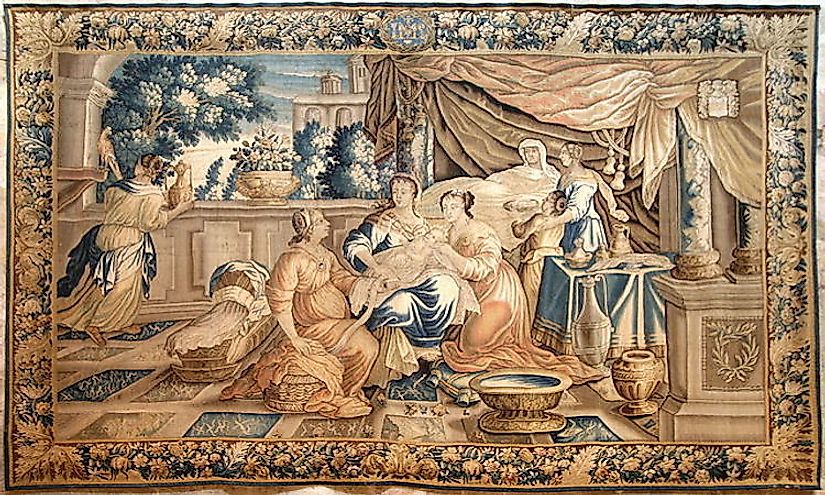
France has a rich cultural heritage, and some unique elements of French culture have been recognized as intangible cultural heritage. The treasures recognized as cultural heritage in the country range from cuisine, hand-artistry, music and dance, ceremonies, and cultural practices. The treasures are renowned for their historical, cultural, religious, and historical significance.
10. Gwoka: music, song, dance and cultural practice -
The term Gwoka refers to the folk songs and dances performed to the Ka drums. This type of music originated in Guadeloupe, and it is carried out in a circle, where dancers and singers take turns performing while facing the drums. The music promotes individual improvisation and expression, and it is embraced by all ethnic groups in the island. The drums can create seven rhythms which have been passed down since the 18th century. Gwoka is performed in communal occasions as well as carnivals and it was inscribed by UNESCO in 2014.
9. Limousin septennial ostensions -
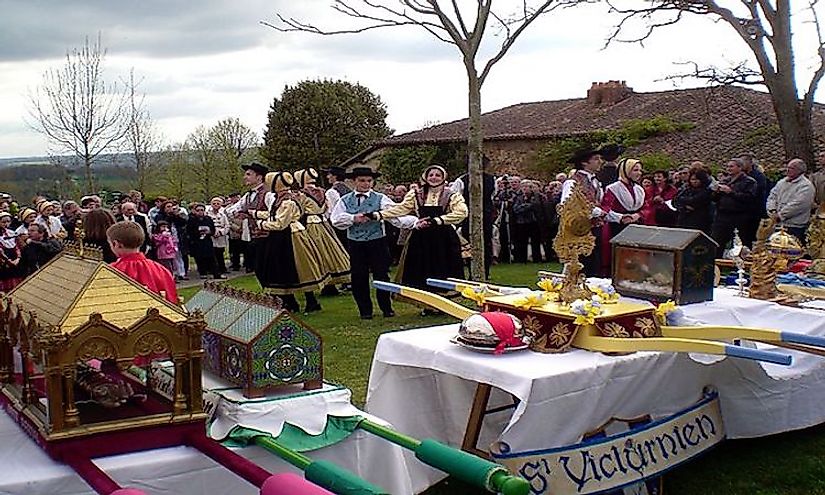
This heritage is a series of grand processions occurring every seventh year through French towns. The processions exhibit relics of Catholic Saints preserved in Limousin Churches while facilitating their worship. Large crowds gather to see the relics, equipped with banners, decorations, and flags. The inhabitants of Limousin take pride in the event, and they consider themselves as the custodians of the tradition. Preparation of the process is communal, and it brings together the clergy, artisans, musical groups, volunteers, charity organizations, and choirs. The tradition was inscribed by UNESCO in 2013.
8. Fest-Noz, festive gathering -
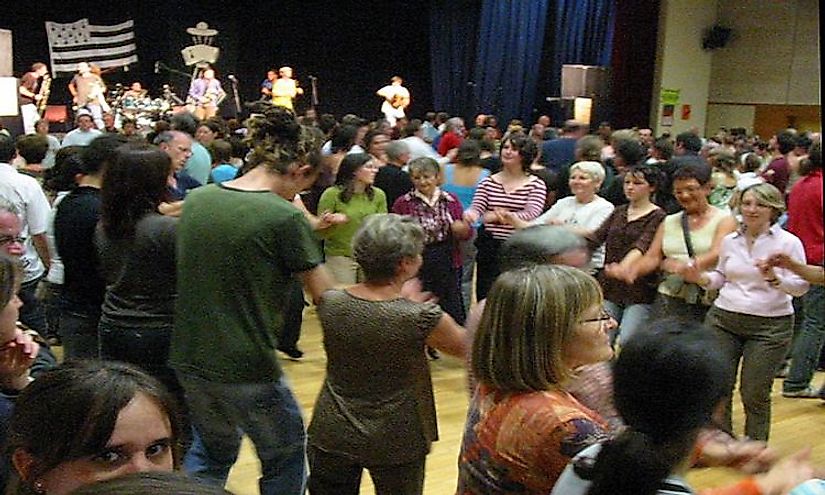
The Fest-Noz festive gathering is carried out by the collective practice of traditional Breton dances, marked by accompanying singing or instrumental music. The gatherings have both cultural and linguistic value, and they serve to bring people of all ages together. Almost a thousand of these gatherings happen in Brittany annually, and they bring together dancers, musicians, as well as singers. The gatherings are aimed at revitalizing the Breton culture and promoting a cultural identity among the Bretons. This festive gathering was listed by UNESCO in 2012 as one of intangible cultural heritage of France.
7. Equitation in the French tradition -
Equitation in the French tradition denotes a horseback school which promotes cordial relations between humans and horses. The school equips riders with fundamental processes and principles which emphasize on the absence of violence and lack of constraint and which seek to strike a balance between the rider’s demands and the horse’s body and mood. The Cadre Noir of Saumur is recognized as the major community located in the National School of Equitation. The trainees aim to develop close relationships with the horse, establish mutual respect and achieve ‘lightness.’ The sport was inscribed by UNESCO in 2011.
6. Gastronomic meal of the French -

The Gastronomic meal of the French is a traditional social practice which features prominently in important celebrations including weddings, anniversaries, and birthdays. The festive meal gathers people together to enjoy good food and drinks. It seeks to foster togetherness and appreciation of taste and products of nature. The meal commences with an apéritif, which is a drink before the meal, and after four successive courses consisting of a starter, meat with vegetables, cheese, and dessert, and ends with liqueurs. The meal emphasizes on the careful selection of dishes, buying of goods which are mainly local, the pairing of food with good wine, and the beautiful arrangement of the table. Individuals known as gastronomes are well versed with the tradition and pass down this knowledge either orally or in written form. UNESCO listed the meal as one of the intangible cultural heritage of France in 2010.
5. Craftsmanship of Alençon -

The Craftsmanship of Alençon refers to a unique craft of needle lace-making which developed in Alençon town, Normandy in France. The technique is time-consuming as seven hours are required per square centimeter, and it demands high-level of craftsmanship. At its inception, the method was used to produce sophisticated lace for the royal court and the elite. The art experienced a decline after the French Revolution, and its dominance was further challenged by the advent of mechanical lace. The artisans use design elements on a finely-stitched net to create decorative items for both religious and civil life. The artisans train for seven to 10 years to fully master the technique passed down through generations. The art was listed by UNESCO 2010 as intangible cultural heritage.
4. Compagnonnage -
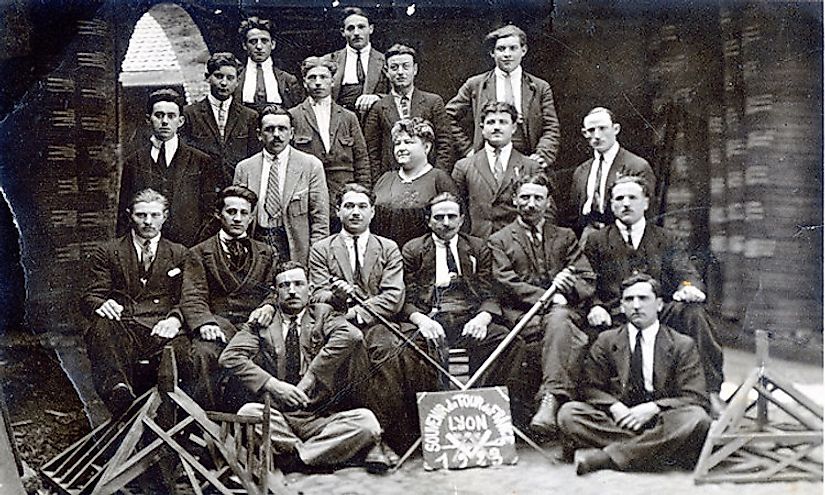
Compagnonnage is an art movement which promotes the networking of artisans involved in wood, stone, leather, textiles, metal, and wood work. It was uniquely developed to transmit knowledge through apprenticeship, school-oriented training, national and international educational travel, trade initiation rites, and customary learning. There exist three communities of ‘compagnons’ which boast nearly 45,000 people. Candidates wishing to learn a particular trade apply to either one of these communities. Training is five-year long on average, and trainees travel through France and the world to discover various methods and ways of transmitting knowledge. For a candidate to be accepted, one must present a masterwork to be assessed by the compagnons. Compagnonage was listed by UNESCO as intangible cultural heritage in 2010.
3. Scribing tradition in French timber framing -

The Scribed timber farming is a traditional technique dating to the 13th century used in timber works. The craft was taught independently from architecture, and it enables builders to accurately define the volumes of a building as well as the characteristics of the wooden components. The craft does not involve the use of math and tape measures but rather employs the use of marking devices, plumb bobs, and levels to lay out and transfer joinery intersections between pieces of timber. The skill emphasizes on a good eye and steady hands. The art was listed by UNESCO in 2009.
2. Maloya -
Maloya is an indigenous music and dance from Réunion Island. It was created by the slaves working on sugar plantations who had Malagasy and African ancestry. Over time, Maloya was embraced by the whole population on the island. Originally, the music genre was a dialogue between a soloist and a choir in addition to percussion instruments, but it takes various forms in the modern day. The major themes expressed in the music are political demands, slavery, and poverty. The lyrics are mainly written in Creole although a creolized Malagasy form is at times used. The Maloya music was inscribed by UNESCO in 2009.
1. Aubusson tapestry -
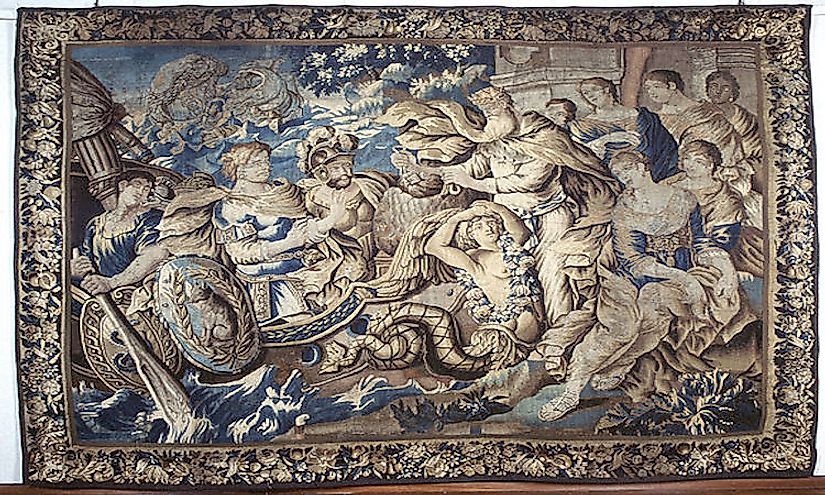
The Aubusson tapestry is a craft which developed in the towns of Aubusson, Felletin, and other regions in the Creuse area of France. The know-how dates back to the 16th century and has been passed down through generations since then. Aubusson tapestry encompasses many processes which work in harmony to weave an image. Works produced from the processes are primarily for decoration purposes and include wall hangings, pieces of furniture, and rugs. The crafting is achieved by use of a horizontal loom referred to as a low-warp loom with yarns made by hand in-house. The Weaver is guided by a cartoon, which is a model of the pattern desired. The whole process is done by hand, and it is time-consuming and expensive. The Aubusson tapestries are considered as the gold standard across the world. The Aubusson tapestry was inscribed by UNESCO in 2009 as an intangible cultural heritage.
UNESCO-Inscribed French Treasures Of Intangible Cultural Heritage
| Rank | Element | Year Inscribed |
|---|---|---|
| 1 | Aubusson tapestry | 2009 |
| 2 | Maloya | 2009 |
| 3 | Scribing tradition in French timber framing | 2009 |
| 4 | Compagnonnage, network for on-the-job transmission of knowledge and identities | 2010 |
| 5 | Craftsmanship of Alençon needle lace-making | 2010 |
| 6 | Gastronomic meal of the French | 2010 |
| 7 | Equitation in the French tradition | 2011 |
| 8 | Fest-Noz, festive gathering based on the collective practice of traditional dances of Brittany | 2012 |
| 9 | Limousin septennial ostensions | 2013 |
| 10 | Gwoka: music, song, dance and cultural practice representative of Guadeloupean identity | 2014 |







